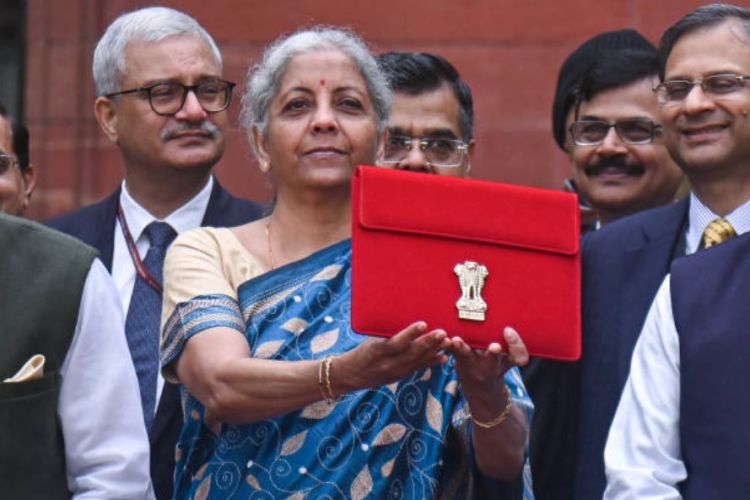Finance Minister Nirmala Sitharaman presented the Union Budget 2025-26 amidst mounting inflation concerns, geopolitical headwinds, and subdued economic growth prospects. Expectations were high that the Budget would offer a comprehensive strategy to boost consumption and demand while providing an economic stimulus. Key issues such as economic growth, unemployment, the rural sector, and middle-class relief were keenly anticipated.
The Budget has been shaped by multiple domestic and global challenges. Persistently high inflation has constrained household spending, while geopolitical tensions, including disruptions in global supply chains, have created economic uncertainties. Sluggish private investment and subdued export growth have further limited India’s economic momentum. Additionally, fiscal constraints arising from previous stimulus measures and increased social sector spending have left the government with limited room for aggressive expansion. The proposals reflect a strategic effort to sustain economic growth while ensuring macroeconomic stability.
READ | Budget 2025-26: Income tax reliefs to boost consumption, growth
Revitalising the rural economy
Agriculture remains a cornerstone of the Indian economy, and the sector was expected to receive a significant boost. In the Budget, the Prime Minister Dhan Dhanya Krishi Yojana (PMDDKY) was introduced, aimed at transforming the agriculture sector. This scheme will be rolled out in partnership with states across 100 districts in its first phase, modelled after the successful Aspirational Districts Programme (ADP) launched in 2018. The PMDDKY will specifically target agricultural districts, intending to foster growth and development in rural areas.
The finance minister also announced the transformation of India Post and India Post Payments Bank into key players in the rural economy. India Post will be repositioned as a major public logistics organisation, further integrating rural economies into the national framework.
Reduced capital expenditure target
With three out of four growth engines—exports, consumption, and private capital expenditure—slowing down, there was considerable reliance on government spending to sustain economic momentum. Contrary to expectations, the finance minister announced a reduction in the capital expenditure target to Rs 10.18 lakh crore from Rs 11.1 lakh crore.
Despite the reduction, the Budget has earmarked substantial funding for infrastructure projects aimed at enhancing national connectivity and stimulating long-term growth. Increased investments in rural roadways, sanitation, water management, and urban modernisation reflect the government’s commitment to balanced regional development.
Budget 2025-26 brings tax relief for the middle class
The Budget brings welcome relief for the salaried class through a restructuring of income tax slabs. Under the New Tax Regime, individuals with an annual income of up to Rs 12 lakh will have zero tax liability. The new tax structure is as follows:
This revision is expected to bolster consumption, which has been waning across key sectors. By enhancing disposable income, the government aims to rejuvenate the virtuous cycle of consumption and manufacturing.
Boosting research and innovation
To drive innovation, Rs 20,000 crore has been allocated to support private sector-driven research. Additionally, a deep-tech fund-of-funds is being explored to nurture the next generation of startups. The Anusandhan National Research Foundation, which will manage a five-year budget of Rs 50,000 crore with 72% funding from private collaborations, reflects the government’s intent to make India a research powerhouse.
The space sector also receives a boost, with a Rs 1,000 crore venture capital fund approved for space startups. Furthermore, 10,000 fellowships under the PM Research Fellowship scheme will support advanced research at leading institutions like IITs and IISc. These initiatives are crucial for India to enhance its global standing in patents and research publications.
The announcement of a Nuclear Energy Mission, with an allocation of Rs 20,000 crore for small modular reactors, marks a strategic shift towards nuclear power. This initiative, along with investments in solar, wind, and green hydrogen projects, underscores India’s commitment to sustainable energy and climate action. The Budget’s emphasis on renewable energy infrastructure aims to meet growing energy demands while accelerating progress towards climate goals.
National manufacturing mission
The newly announced National Manufacturing Mission aims to bolster the ‘Make in India’ initiative by supporting small, medium, and large enterprises. The mission will provide policy support, implementation roadmaps, and a governance framework to enhance manufacturing competitiveness.
Significantly, the mission will focus on clean tech manufacturing, enhancing domestic value addition in solar PV modules, EV batteries, high-voltage transmission equipment, wind turbines, and grid-scale batteries. This move is pivotal in reducing dependency on China for clean tech components and aligns with existing Production Linked Incentive (PLI) schemes.
While the Union Budget 2025-26 takes significant steps in tax reforms, research support, and rural upliftment, the reduction in capital expenditure targets may limit its impact on immediate economic revival. However, the strategic focus on infrastructure, manufacturing, and renewable energy lays the groundwork for sustainable long-term growth. The Budget, therefore, presents a balanced approach, navigating between short-term relief and long-term development goals.

